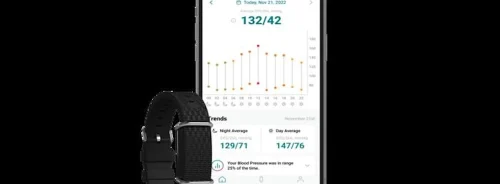HealthManagement, Volume 19 - Issue 4, 2019
Summary: Overview about the value of mHealth in cardiology exemplified by some promising tools that for sure will change the way cardiology is practiced, especially in the management of rhythm disturbances like atrial fibrillation.
Where Are We Now?
Nowadays, there is a lot of hype about the role of wearables and mobile health (mHealth) in the field of cardiology (McConnell 2018). Only recently has the medical community started to embrace the certainty that most “health” takes place outside the healthcare facilities (ie the daily activities and clinical events that occur “the other 360 days” per year when people are not seen by a clinician).
Some authors like Steinhubl and Topol (Steinhubl 2015) highlighted some years ago that we were in the process of moving from digitalisation to digitisation in cardiovascular care, and this change will have a lot of meanings for patients and providers. These new tools could give us a much more high-definition view of our patients; one good example is the wearable sensors that track a wide range of important physiologic parameters continuously. This digitisation of health can also markedly improve the physician-patient relationship, sharing the data obtained through the digital technologies.
The role of mHealth in improving outcomes in the early phase, proof-of-concept studies targeting lifestyle are well established (Ganesan 2016). The topic of mHealth has been the focus of a formal scientific statement (Eapen 2016) and its potential in clinical trials is currently explored, in any case, but has yet to be fully explored and realised. A systematic approach is needed to balance the promises and opportunities afforded by mHealth with the maintenance of privacy, safety, and regulatory standards in the conduct of emerging clinical trials
How to incorporate technology successfully into the health care system remains a test yet has the potential to yield huge societal and individual benefits.
Two interesting approaches in the field of cardiology are currently driving the conversation on mHealth: one is the measurement of physical activity, and the other is arrhythmia detection.
You might also like: Potential of mobile health apps in facilitating weight loss
mHealth for Promotion of Physical Activity and Fitness
Physical fitness, not just the amount of regular physical activity, has also been revealed to be an independent risk factor for CV disease and longevity (Arena 2015). This research has led to a call for assessing cardiorespiratory fitness as a vital sign in daily practice (Ross 2016). Mobile devices can be used to assess fitness (Coolbaugh 2014), with the most straightforward form as a self-administered 6-minute walk test. This was validated as part of the Health eHeart study, where the smartphone-measured distance was accurate to within 15% in more than 90% of participants (Brooks 2015).
But using a device/wearable is not going to make you exercise, and there are many proofs of this which should be noted. Two good examples are the IDEA (Innovative Approaches to Diet, Exercise and Activity) trial (Jakicic 2016) and the TRIPPA (Effectiveness of activity trackers with and without incentives to increase physical activity) trial (Finkelstein 2016).
The IDEA (Jakicic 2016) was a long-term study of weight loss, with physical activity and fitness as components. Young adults were prescribed a low-calorie diet, increased physical activity, and group counselling for 6 months before being randomised to “enhanced” intervention with a wearable (that tracked calories and physical activity). Paradoxically, at the end of the 24 months, the enhanced group lost less weight. Without any doubt, the wearable in this study did not show the expected benefit in maintaining weight loss, but its contribution to behaviour change was difficult to determine.
The TRIPPA (Finkelstein 2016) was a randomised controlled trial where employees from 13 organisations in Singapore were randomly assigned to control (no tracker or incentives), activity tracker, tracker plus charity incentives, or tracker plus cash incentives. The cash incentive was most effective at increasing moderate to vigorous physical activity per week at 6 months, but this effect was not sustained 6 months after the incentives were discontinued. The authors identified no evidence of improvements in health outcomes, either with or without incentives, calling into question the value of these devices for health promotion.
A critical issue, highlighted in these and other studies, is the recognition that altering a behaviour such as physical activity is more challenging and complex than acquiring a mobile device or app.
Even more challenging is the limited integration of physical activity assessment into the clinical workflow. Consumer devices provide near-continuous daily measures of physical activity, which would be overwhelming for a provider to review. Thus, software solutions are needed to summarise clinically relevant physical activity measures and integrate into the electronic health records to allow review with similar ease as viewing a vital sign or lab result.
Another interesting point about monitoring is the accuracy of wearables used by consumers; a lot of publications about this topic are available (Thomson 2019) showing in comparisons that the accuracy of real-time heart rate monitoring by different devices is reduced as exercise intensity increases. This finding, unfortunately, is common in literature with many other devices that are suboptimal at moderate exercise (Cadmus-Bertram 2017; Wang 2017).
In summary, we have great tools for fitness in the field of wearables for consumers, but accuracy needs to be improved.
Cardiovascular mHEALTH for Atrial Fibrillation Detection and Management
A great chance for mHealth beyond prevention is enabling earlier disease detection and helping both patients and providers better manage the cardiovascular disease - working together for proactive rather than reactive health care (McConnell 2018). One field where mHealth and cardiology are getting together is arrhythmia detection.
The detection and management of the most common arrhythmia - atrial fibrillation (AF) - represents a major cardiovascular mHealth opportunity to prevent strokes, manage symptoms, and reduce hospitalisations. AF has been challenging to detect and manage, as episodes can be paroxysmal or asymptomatic. Office visits or short-term monitoring devices provide only limited “snapshots” as to disease presence and burden. This can result in complications of stroke, tachycardia-related left ventricular dysfunction, and heart failure, as well as ever-increasing AF-related hospitalisations and health care costs (Kim 2011). The prevalence of undiagnosed AF in the United States alone is estimated to be almost 600,000 patients, with an economic burden of more than $3 billion (Turakhia 2015).
The occult AF - a risk for primary or secondary stroke - has incited efforts to implement AF-screening strategies in at-risk populations. For example the study REVEAL AF (Reveal Atrial Fibrillation) included high-risk patients with an implantable loop recorder (not a wearable, needs surgery for implantation) showed a detection rate of 29% for new AF at 18 months, and 40% at 30 months, with a median of 4 months until AF detection (Reiffel 2017). This kind of research is the one that is motivating the development of smartphone and wearable devices for AF detection to empower broader patient and consumer access (Freedman 2017).
One could discuss that the classic Holter monitors, although bulky, were one of the first “mHealth” devices available. Their redesign led to the emergence of small patch ECG monitors that led us to longer monitoring and increased diagnostic yield (Haberman 2015). This has been followed by the development of multiple consumer-friendly, smartphone-connected handheld or wearable ECG monitors for mobile use. Smartphones and wearable devices have also leveraged optical detection of photoplethysmographic (PPG) signals to track heart rate and rhythm from the finger, face, and wrist (McConnell 2018). These advances make us rethink the monitoring strategy of individuals.
Recent studies of both mobile ECG- and PPG-based AF detection show high rates of accuracy. Automated analysis of handheld single-lead ECGs in a diverse population of 381 participants yielded a 94% sensitivity and 99% specificity (Haberman 2015). A screening study performed using both ECG and PPG methods in more than 1,000 at-risk primary-care clinic patients found a 3% incidence of AF (Chan 2016). Using the PPG signal from placing the finger over the phone’s camera had 98% specificity and 93% sensitivity for AF detection, compared with 71% and 99% for the automated handheld ECG-based app.
Despite these promising early results, we must highlight that there is a major concern for broader use of AF detection algorithms. This concern is the possible loss of specificity, as other rhythms that create irregularity (eg premature atrial or ventricular contractions, supraventricular tachycardia, atrioventricular block) could potentially be misclassified as AF, leading to improper diagnosis and treatment.
Also artificial intelligence could help us in rhythm monitoring through machine learning algorithms. One example was founded on smartwatch PPG-based heart rate measurements plus step counts used to train an AF-detection algorithm obtained from more than 9,000 Health eHeart participants, with high accuracy (98% sensitivity, 90% specificity) when tested in patients before and after cardioversion, but limited accuracy (68% sensitivity and specificity, 8% positive predictive value) when tested in a broader ambulatory cohort that self-reported AF status (Tison 2018).
The next step in this kind of research was the Apple Heart Study that was recently finalised and tried to prospectively detect irregular rhythms via smartwatch PPG, with ECG patch follow up (Turakhia 2019). The objective was to help provide a foundation for how wearable technology can inform the clinical approach to AF identification and screening. The results were communicated in the scientific sessions of the American College of Cardiology and are worth reading.
You might also like:#EHRA2019: Apple Heart Study - abnormal heart rhythm detected by smartwatch
To summarise the results of the Apple Heart Study, this strategy could work accurately but needs some improvements. From my point of view, it was a nice way to start clinical trials with digital tools, but the selection process of the participants needs several improvements. Another important point was that this was tested with an old technology as the new versions of this device are able to perform ECG that will be better than an algorithm based on PPG; for sure new studies will come out in the next years.
Conclusion
Cardiology and mHealth are good partners to show the value of these technologies. There are very good examples of mHealth value in the cardiology field. These tools are promising, and for sure they will change the way in which cardiology is practiced, especially in the management of rhythm disturbances, with special focus on AF, but physicians need to be prepared for the upcoming technologies and the implementation of artificial intelligence also in this arena for the daily practice. We need better results of performance to ensure the implementation of these technologies in our clinical pathways.
Key Points
- Nowadays there is a lot of hype about the role of wearables and mobile health in the field of cardiology
- We have great tools for fitness in the field of wearables for consumers, but accuracy needs to improve
- Studies like Apple Heart Study are a nice way to start clinical trials with digital tools but the selection process of the participants needs several improvements
- We need to rethink how we must monitor patients and empower them through wearables that show accuracy in their performance
References:
Arena R et al. (2015) A message from modern-day healthcare to physical activity and fitness: welcome home. Prog Cardiovasc Dis. 57(4):293–5.
Brooks GC et al. (2015) Accuracy and usability of a self-administered 6-minute walk test smartphone application. Circ Heart Fail. 8(5):905–13.
Cadmus-Bertram L et al. (2017) Accuracy of Heart Rate Monitoring by Some Wrist-Worn Activity Trackers” Ann Intern Med. 167(8):607-608.
Chan P et al. (2016) Diagnostic performance of a smartphone-based photoplethysmographic application for atrial fibrillation screening in a primary care setting. J Am Heart Assoc, 5(7):e003428.
Coolbaugh CL et al. (2014) Evaluation of an exercise field test using heart rate monitors to assess cardiorespiratory fitness and heart rate recovery in an asymptomatic population. PLoS One, 9(5):e97704.
Eapen ZJ et al. (2016) Defining a Mobile Health Roadmap for Cardiovascular Health and Disease. J Am Heart Assoc, 5(7) pii: e003119.
Finkelstein EA et al. (2016) Effectiveness of activity trackers with and without incentives to increase physical activity (TRIPPA): a randomised controlled trial. Lancet Diabetes Endocrinol, 4 (12):983-995.
Freedman B et al. (2017) Screening for atrial fibrillation: a report of the AFSCREEN international collaboration. Circulation, 135(19):1851–67.
Ganesan AN et al. (2016) International Mobile-Health Intervention on Physical Activity, Sitting, and Weight: The Stepathlon Cardiovascular Health Study. Journal of the American College of Cardiology, 67(21):2453-63.
Haberman ZC et al. (2015) Wireless smartphone ECG enables large-scale screening in diverse populations. J Cardiovasc Electrophysiol, 26(5):520–6.
Jakicic JM et al. (2016) Effect of wearable technology combined with a lifestyle intervention on long-term weight loss: the IDEA Randomized Clinical Trial. JAMA, 316 (11):1161–71.
Kim MH et al. (2011) Estimation of total incremental health care costs in patients with atrial fibrillation in the United States. Circ Cardiovasc Qual Outcomes, 4(3):313–20.
McConnell MV et al. (2018) Mobile Health Advances in Physical Activity, Fitness, and Atrial Fibrillation: Moving Hearts. J Am Coll Cardiology, 71(23):2691–701.
Reiffel JA et al. (2017) REVEAL AF Investigators. Incidence of Previously Undiagnosed Atrial Fibrillation Using Insertable Cardiac Monitors in a High-Risk Population: The REVEAL AF Study. JAMA Cardiol, 2(10):1120-1127.
Ross R et al. (2016) Importance of assessing cardiorespiratory fitness in clinical practice: a case for fitness as a clinical vital sign: a scientific statement From the American Heart Association. Circulation, 134(24):e653–99.
Steinhubl SR et al. (2015) Moving from digitalization to digitization in cardiovascular care: why is it important, and what could it mean for patients and providers? J Am Coll Cardiology, 66(13):1489–96.
Tison GH, et al. (2018) Passive detection of atrial fibrillation using a commercially available smartwatch” JAMA Cardiol, 3(5):409-416.
Thomson EA et al. (2019) Heart rate measures from the Apple Watch, Fitbit Charge HR 2, and electrocardiogram across different exercise intensities. J Sports Sci, 37(12):1411-1419.
Turakhia MP et al. (2015) Economic burden of undiagnosed nonvalvular atrial fibrillation in the United States. Am J Cardiol, 116(5):733–9.
Turakhia M, et al. (2019) Rationale and design of a large-scale, app-based study to identify cardiac arrhythmias using a smartwatch: The Apple Heart Study. Am Heart J. 207:66-75.
Wang R et al. (2017) Accuracy of Wrist-Worn Heart Rate Monitors. JAMA Cardiol, 2(1):104-106.







